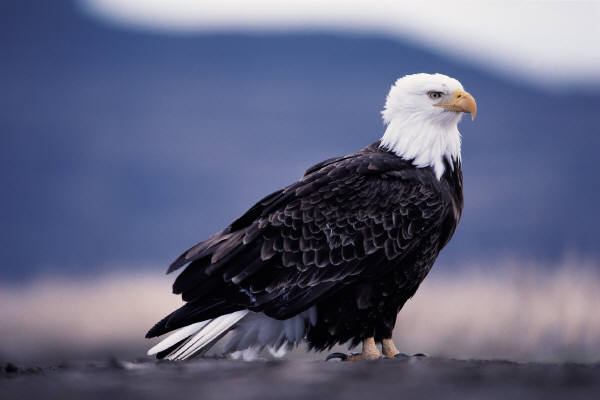Animal State | Eagle | Eagles are large birds of prey and is powerful, with a heavy head and beak. Even the smallest eagles, like the eagle (which is comparable in size to a buzzard or red-tailed hawk), the wings are relatively longer and more uniformly broad and more direct, faster flight. Species listed as eagles vary in size from South Nicobar Serpent Eagle, 450 g (1 lb) and 40 cm (16 inches) to 6.7 kg (14.7 lbs) Sun Eagle Steller and 100 cm (39 inches) Filipino Eagle. Like all birds of prey, eagles have very large beaks hooks to tear the flesh of their prey, strong muscular legs and strong claws. The female of all known species of eagles are larger than males Eagles usually build their nests, called nests in tall trees or on cliffs.
Among the eagles are among the largest birds of prey: some of the condors and vultures of the Old World are bigger. Four species of Steller - Sea Eagle East Asia, South and Central American Harpy Eagle, the Philippine Eagle and Wedge-tailed Eagle of Australia - can reach one meter in length. The The size of both the Philippine eagle, the harpy eagle, and rarely more than two meters, increasing maneuverability through the forest where they live and the wedge-tailed eagle is relatively light, with an average mass of 3.466 g (7, 63 lbs) . [Citation needed] The Harpy Eagle and Wedge-tailed eagle is also shorter, measuring 89-100 cm and 80-104, respectively Steller's Sea Eagle is usually between 85-94 centimeters (33-37 inches). The modern English name of the bird is derived from the Latin word aigle eagle from the French.
The Greek word can be a little old. The Albanian word for eagle is "shqiponje" comes from "Shqipe" root, meaning "eagle". In Britain before 1678, Eagle referred specifically the golden eagle, with other native species, the white-tailed eagle, being known as the Erne. The modern name "Golden Eagle" for Aquila chrysaetos was introduced by the naturalist John Ray. The Moche people of ancient Peru worshiped animals and often depicted eagles in their art. Despite these modern and historic Native American practices of giving eagle feathers to non-Indians and members of other tribes that have been deemed worthy, current United States eagle feather law stipulates that only individuals of certifiable Native American ancestry enrolled in a federally recognized tribe are legally authorized to obtain eagle feathers for religious or spiritual. The eagle is also the patron saint of animals of Zeus.















0 comments
Post a Comment